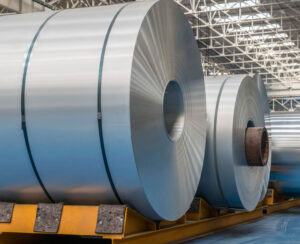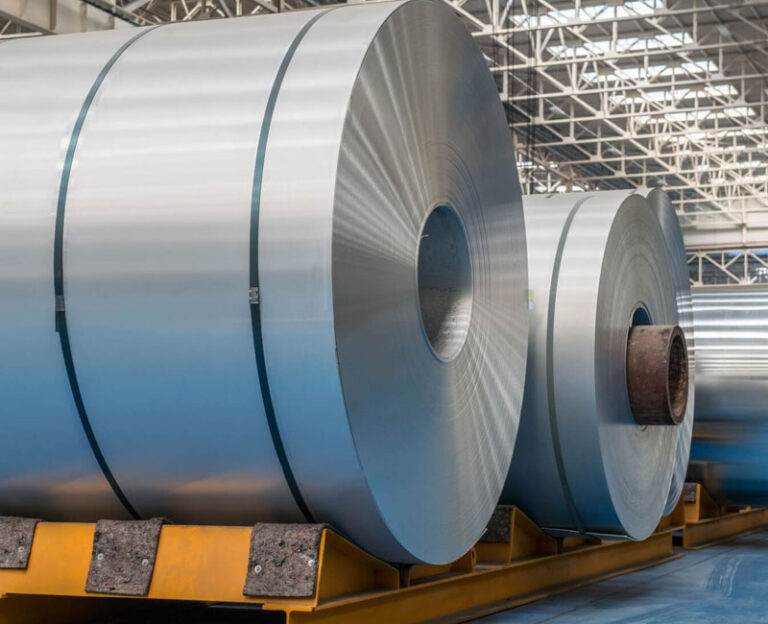AM/NS India: Moving Towards Green Steel for a Sustainable Future
In a major step towards sustainability and a cleaner environment, AM/NS India is preparing to adopt green steel production in the coming years. This marks a significant shift in the steel industry in India, as the company aims to reduce its carbon emissions and become an eco-friendly steel producer.

What is Green Steel?
Green steel is produced using processes that emit little to no carbon dioxide. Traditionally, steel is made using coal-based blast furnaces, which release a large amount of carbon dioxide and other greenhouse gases. These gases are major contributors to air pollution and climate change.
Green steel is different because it is made using cleaner energy sources like hydrogen, renewable electricity from solar or wind, and recycled scrap metal. Instead of releasing harmful gases, the process aims to either capture the carbon or replace carbon-intensive fuels with clean energy.
Why AM/NS India is Focusing on Green Steel
Climate change is a growing concern globally. Governments, industries, and societies are now working together to reduce carbon footprints and adopt sustainable practices. The Indian government has also set a target of becoming carbon-neutral by 2070.
The steel industry is one of the largest contributors to carbon emissions worldwide. AM/NS India, being a major player in the steel sector, understands the importance of reducing its environmental impact. The company believes that adopting green steel production is not only important for the planet but also crucial for future business growth and competitiveness.
AM/NS India’s Green Steel Plans
AM/NS India is working on several strategies to move towards green steel production. Some of their major plans include:
- Using Hydrogen in Steel Production
Hydrogen can replace coal in the blast furnace process. When coal is burned, it produces carbon dioxide. But when hydrogen is used, it produces only water vapor, which is harmless. AM/NS India is exploring ways to set up hydrogen-based plants for steel making. - Switch to Renewable Energy
The company is increasing the use of renewable energy like solar and wind power in its steel plants. By reducing dependence on electricity generated from fossil fuels, the company can cut down its carbon emissions significantly. - Electric Arc Furnaces (EAF)
EAF technology uses electricity to melt scrap steel instead of using coal. It is far less polluting and more energy-efficient. AM/NS India plans to increase the use of electric arc furnaces for recycling steel. - Carbon Capture Technologies
The company is also looking at carbon capture and storage (CCS) technology. This method captures the carbon dioxide produced during manufacturing and stores it underground or uses it in other industries, preventing it from being released into the air. - Sustainable Raw Materials
AM/NS India is focusing on using raw materials that are produced with less environmental impact. It also aims to increase the use of recycled steel, which requires less energy than producing steel from iron ore.
Investments and Collaborations
To make green steel a reality, AM/NS India is investing a large amount of money in research, technology, and infrastructure upgrades. The company is collaborating with global technology leaders, energy companies, and research institutions to develop clean technologies.
AM/NS India’s parent companies, ArcelorMittal and Nippon Steel, are already pioneers in green steel technologies in Europe and Japan. Their expertise and experience will help AM/NS India implement the best global practices in India.
Statements from Leadership
The CEO of AM/NS India said that the company is fully committed to transforming the steel industry in India. He mentioned that sustainability is no longer just an option but a responsibility. The company aims to lead by example and inspire other industries to adopt cleaner methods.
He further added that the journey towards green steel will be challenging, but it is necessary. The company believes that this transformation will not only benefit the environment but also create new opportunities in green jobs, advanced technology, and innovation.
Challenges in Adopting Green Steel
While the goal is clear, the path to green steel is not without challenges. Some of the major obstacles include:
- High Costs: Setting up hydrogen plants, renewable energy systems, and carbon capture technologies require huge investments.
- Technological Barriers: Green steel production is still in the early stages globally. Adapting these technologies to Indian conditions will take time and effort.
- Availability of Clean Energy: India needs to further expand its renewable energy capacity to meet the demands of industries like steel.
- Government Policies: Supportive policies, subsidies, and clear regulations are needed to help industries move towards green production.
Despite these challenges, AM/NS India remains confident about its green mission.
Impact on Environment and Society
If AM/NS India successfully transitions to green steel, it will have a positive impact on the environment. The reduction in carbon emissions will contribute to cleaner air, better health for people, and help fight climate change.
On the societal side, the move will lead to the creation of green jobs in areas like renewable energy, hydrogen production, and advanced manufacturing. It will also boost India’s position as a leader in sustainable industries globally.
Future Roadmap
AM/NS India has set short-term and long-term goals for its green journey. In the short term, the company plans to start pilot projects for hydrogen-based steel and increase the use of recycled steel through electric arc furnaces. It also aims to boost renewable energy usage in its existing plants.
In the long term, the goal is to build fully green steel plants powered entirely by clean energy sources. The company also plans to work with supply chain partners to ensure that raw materials and logistics are also environmentally friendly.
A Step Towards India’s Green Future
India is one of the fastest-growing economies in the world, and industries play a key role in its growth. However, it is also important that this growth does not come at the cost of the environment. AM/NS India’s move towards green steel is a step in the right direction.
It not only aligns with India’s climate goals but also shows how industries can grow while being responsible towards nature. If more companies follow this path, India can achieve a balance between economic growth and environmental protection.






